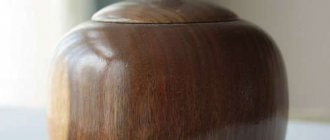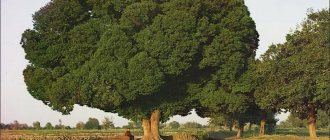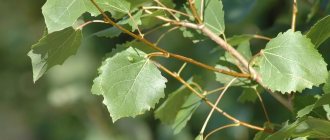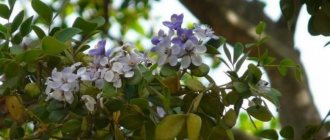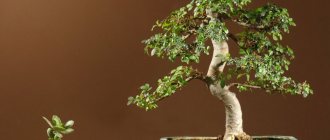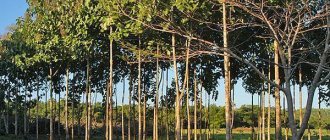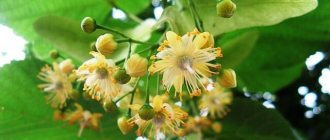Craftsmen working with wood have always looked for wood species that will give their products special strength and aesthetic value. One of the most valuable species, without exaggeration, is ebony wood. This is a hard and heavy material, the density of which at a standard humidity of 15% reaches 1300 kg/m³. Several varieties of ebony trees are known, each of which has its own distinctive characteristics.
Wood or fruit?
The ebony tree belongs to the Persimmon genus. Many people know this genus for its sweet, fleshy, bright orange fruits. But the fruit of the ebony tree is not always edible. Delicious fruits are produced by Oriental, Caucasian and Virginia Persimmon, as well as the Maloba and Black Sapota varieties. Today, persimmons can be grown in any country with a warm climate. Chocolate varieties and large berries resembling a black apple appeared on sale. Even the Philippines has started growing an edible variety of persimmon, with bright red berries called "Velvet Apple". In Israel, the “Sharon” variety was developed, which has no seeds and has no astringent taste. These fruits are bought by supermarkets in many countries. Other varieties are better known for their valuable wood.
Application in the furniture industry
In the 17th century, ebony wood was used not only in inlay, but also in veneering. But the greatest interest in it began to be shown only 200 years later, when a fashion began to take shape based on stylization of other cultures, for example, Roman, Greek, Egyptian, Indian, etc. Curule chairs with X-shaped legs were in particular demand. In Ancient Rome they were made of ivory or bronze, and in the century before last - from ebony. It looked light and graceful, but in fact it was a strong and reliable design.
Nowadays, becoming the proud owner of furniture made from ebony is an unheard of luxury that not many people can afford. Due to its properties, ebony wood, products from which are valued all over the world, is considered a very expensive material. Vases and figurines, canes and candlesticks, skillfully carved by talented craftsmen, will become truly valuable and rare acquisitions that can decorate any home.
A little history
Since today the main story is about wood, the conversation will be about the history of the use of this particular material, and not edible fruits. The blackwood tree has had many names. The Africans called him "Mugembe" and "Mpingo". The names “musical tree” and “zebra tree” were also heard. Ancient tribes used bark, leaves, and wood in their farming. They were inclined to deify nature, and ebony in Africa was also endowed with supernatural properties. It was believed that if you fenced your home with a palisade made of ebony wood, then evil spirits would not be able to enter it. Valuable wood was used to make amulets and ritual weapons. Craftsmen made ebony boxes in which they stored ritual objects so that the gods would not turn away from them and would retain their magical qualities.
Ebony products were found by archaeologists during excavations of Egyptian tombs. But later research showed that this is not a tree of the ebony family, but an African pink Dalbergia from the Legume family.
Persia highly valued the properties of ebony wood. This is evidenced by the fact that Persia accepted tribute from the Ethiopians in ivory, gold and ebony bars.
Peter I brought the fashion for black wood products to Russia. At that time, black ebony was widely used for making trinkets, home decoration and furniture. This emphasized status and position in society. In addition, the presence of expensive furniture made of valuable wood spoke of wealth and good taste.
Application in the manufacture of musical instruments
People began to use ebony for their needs back in ancient times. It is worth noting that it has always been in price, so it was used mainly for the manufacture of various religious objects, sculptures, and, of course, expensive furniture. In addition, ebony wood is believed to be able to neutralize poisons, for this reason it was very often used to make tableware.
Eben is widely used in the manufacture of musical instruments such as flute, oboe and clarinet. Ebony is also excellent for piano keys and individual parts of the guitar, especially shells and necks. Professional musicians value such instruments very much. Thus, the polished shell on a guitar, made of ebony, does not emit unnecessary extraneous sounds even if the pick accidentally “jumps off” the string.
Characteristics of wood
Trees from the Ebony family, which have valuable wood, have powerful trunks. The diameter of many plants exceeds 1 m, and their height is up to 10 m. Ebony trees grow very slowly, which is what gives the wood greater density. According to its characteristics, the density of black wood is more than 2 times higher than the density of oak.
The bark and sapwood of the ebony tree are of no value. They are used only by local healers for their potions and craftsmen for household utensils. Unfortunately, the bark and sapwood that is removed before sale can account for 60-70% of the entire trunk.
In addition to its high density, heartwood has oiliness and the ability to withstand changes in temperature and humidity without loss of stability. Ebony can have black, chocolate and lilac-violet heartwood. It can be uniform or striped; there are no discernible annual rings in the heartwood. This type of valuable wood does not rot and is not susceptible to damage by insects.
Benefits and harms
Black sapota is a low-calorie product, the pulp of which is saturated with valuable elements. It contains a lot of fiber, water, and carbohydrates. The fruits have a minimal amount of fat, and vitamin C is several times more than in oranges. The berry is rich in B vitamins, potassium, iron, phosphorus, and sodium. Due to the high content of dietary fiber and moisture, the product fills the stomach well, which can be used for dietary nutrition. The vitamin-mineral complex strengthens the entire body as a whole, mobilizes resources that resist viruses. Eating chocolate persimmon fills the body with energy and brings cheerfulness, which is facilitated by ascorbic acid and glucose. Eating black sapota affects the body as follows:
- makes the walls of blood vessels elastic, cleanses them of cholesterol deposits;
- strengthens the musculoskeletal system, teeth;
- prevents colds;
- helps clear the airways during bronchitis and flu;
- increases hemoglobin, helps fight anemia;
- has a positive effect on the functioning of the heart;
- removes harmful substances from the body, relieves swelling;
- accelerates intestinal motility, stabilizes the activity of the digestive tract;
- improves the functioning of the nervous system, eliminates signs of depression;
- stimulates the production of collagen by skin cells, accelerates regeneration processes;
- prevents surges in blood pressure.
Procurement problems
As already noted, the ebony tree grows very slowly. This in itself is already a problem. But besides this, wood is very difficult to dry. To speed up the process without compromising the quality of the material, they came up with a method of preliminary preparation. Drying of wood begins 2-2.5 years before felling.
To do this, circular notches are applied to the trunk to stop growth.
Felled wood cannot be dried quickly. After cutting, it is covered from the sun and protected from drafts. The ends of the logs are coated with lime or other material with similar characteristics.
Botanical description[ | ]
Trees or shrubs, deciduous or evergreen. There are no terminal buds. The leaves are simple, alternate, sometimes with small translucent glands. Flowers are dioecious or polygamous. Male flowers are axillary, usually collected in racemes. Stamens from 4 to many, often paired. Female flowers are usually solitary, axillary. The calyx is usually 3-5 (sometimes up to 7) petaled, and can be reduced. The corolla is bell-shaped or tubular, 3-5 (-7) lobed. The fruit is a fleshy, leathery berry, usually with a large calyx. Seeds from 1 to 10 or more, often laterally compressed.[3]
Diospyros chloroxylon flowers
Types of wood. Eben of Cameroon
The types of ebony could be listed for a very long time. In total, there are about 500 of them in nature. However, only those that have a beautiful, intense color and shine of heartwood are popular. This is associated with special microbiological processes inside the trunk.
The most common variety is Cameroonian ebony. This wood is delivered from Africa. It has a rich black color, occasionally it can be decorated with gray veins. Despite the high aesthetic qualities of this type of wood, it is rated lower than other varieties. This happens because the wood has open pores.
Recipes
Even overripe berries are suitable for cooking. The pulp of a ripe fruit is sticky, so you need to cut it carefully so as not to stain your clothes.
Biscuit dessert
You will need two large black sapotas, a chicken egg, 50 grams of sugar, half a glass of flaxseed flour, 100 ml of sour cream of any fat content. The peeled fruits are dipped in boiling water, left there for 30-40 seconds, removed from the stove and the water is poured out. Then they need to be cooled and removed from the skin. The pulp is cut into plastic pieces measuring approximately 2x3 cm and transferred to a silicone baking dish. Combine sugar with egg, add flour, sour cream and knead into a homogeneous mass. Pour the fruit pieces over it and bake in the oven for 20 minutes. When serving, you can sprinkle the top of the biscuit with coconut.
Smoothie
You need to take one fruit each of black sapota and banana and two small tangerines. All ingredients are peeled and placed in a blender bowl. Add a few almonds. Beat for 30 seconds at high speed. The mixture is poured into glasses and decorated with grated chocolate and a sprig of mint.
Mousse
Take two black sapota fruits, three spoons of creamy coffee liqueur, a bag of vanillin, 100 ml of high-fat cream. Chocolate persimmons are cleaned and the seeds are removed. The pulp is blended with the addition of liqueur and vanillin. Transfer to a bowl and decorate with grated nuts on top.
Salad
To prepare a sweet salad you need to take one sapota, banana, mango, 30% fat cream, and a spoonful of powdered sugar. The fruits are separated from the peel, the pulp is cut into cubes, and carefully placed in a bowl. Whip the cream and powder until thick and spread on top of the fruit pieces. Sprinkle with ground cinnamon.
Ceylon view
Ceylon ebony is considered the highest quality and most expensive type of black wood. It is very hard and polishes perfectly. The variety is classified as finely porous, which affects its quality. Ceylon ebony is not afraid of exposure to water. This wood is called Black Ebony. All expensive trinkets and furniture of the 16th-19th centuries were made from wood of this type.
Links[ | ]
- Diospyros
: information about the taxon on the Tropicos website. - Diospyros
: taxon information in the Plantarium Project (plant key and illustrated species atlas). - Persimmon – Diospyros
| Dictionaries and encyclopedias |
|
| Taxonomy |
|
Indonesian variety - Makassar ebony
Trees of this species grow in Indonesia. This ebony is classified as a colored species. The base of the wood is black, but it has characteristic yellow and light brown stripes that create a beautiful pattern. Among the ebony varieties, the Makassar variety is one of the densest.
When processed, this type of ebony wood, like all others, forms a dense and persistent dust. It may irritate the skin and cause red eyes. In addition, this dust is harmful to the lungs.
How to choose
To choose the right black sapota, you need to focus on the color of the peel and the smell. Ripe fruits have a weak fruity aroma and a muted green tint. There may be specks and dots on the skin, but there should be no dents or brown spots. A ripe berry is soft to the touch and is easy to press, so you need to touch it carefully. To some, the brown color of the interior seems unpresentable. Overripe fruits may be bruised, which spoils their appearance. However, this does not affect the taste in any way.
Lunar ebony - wood features
This is the sonorous name given to the wood of the Mabolo tree. This is a very rare variety of black ebony, growing in the Philippines and in the dense jungles of Myanmar.
The wood of this variety is light, with a very beautiful texture. On the back, it may be white with green streaks. Dried wood becomes golden yellow and the veins turn black. Some plants have bluish or chocolate streaks and streaks. Despite its unique beauty, cutting down and exporting moon ebony is prohibited. Occasionally, Myanmar sells permits to cut down small batches of trees. In this case, we will be talking about plants whose age is from 400 to 1000 years. Harvesting younger trees is strictly prohibited. In this variety of ebony, bark and sapwood make up up to 70% of the entire thickness of the trunk.
After drying, the core part of moon ebony loses much volume. Additional properties of wood are given by the presence of a large number of essential oils. Thanks to them, lunar ebony is not afraid of water, termites and the influence of external environments. Exclusive souvenirs, expensive billiard cues, musical instruments and interior items are made from this type of ebony. Craftsmen do not always take on the task of processing wood of this quality. The material is too expensive and hard. It can only be processed with a special tool, which not everyone has.
What does it look like
Black sapota is a tree with evergreen foliage. Diospyros plants exist only in tropical and subtropical climates. These are long-lived trees that can stand for 500 years. The plant is tall - the trunk height reaches 20-25 meters. It has black bark and a branched crown. The leaves are very large, dense, glossy, rich green. They are elongated in length, pointed at the end, length - 20-30 cm. During the flowering period, small sepals up to 1.5 cm in diameter bloom on the branches. These are cute white flowers that emit a delicate aroma.
Tree from the Red Book
The demand for ebony wood has led to the threat of their widespread extinction. Since 1994, ebony (many of its species) has been listed in the Red Book.
Today, 103 species are classified as endangered. Fourteen species are listed as "endangered" and another fifteen species are classified as "extremely endangered." There are 21 species with “low risk” and “out of danger” that are allowed for harvesting. However, most of these 21 species are valued for their edible fruits rather than their wood.
Notes[ | ]
- For the convention of indicating the class of dicotyledons as a superior taxon for the group of plants described in this article, see the section “APG Systems” of the article “Dicotyledons”.
- Information about the genus Diospyros
Index Nominum Genericorum
database of the International Association for Plant Taxonomy (IAPT). - Flora of China, 1996.
- Diospyros
(English). The Plant List. Version 1.1. (2013). Access date: August 7, 2016. - Cultivation of persimmons on the territory of the USSR (undefined)
.
Zooengineering Faculty of RSAU-MSHA (unofficial site)
. - Types of Persimmon (undefined)
.
BerkeleyWellness.com
. School of Public Health at UC Berkeley (November 12, 2015). - Article in the Daily Mail about the results of research conducted by the Hebrew University (Israel)
- CH Briand.
The common persimmon (Diospyros virginiana L.): The history of an underutilized fruit tree (16th-19th centuries) (English) // Huntia. - Pittsburgh, PA, USA: Hunt Institute for botanical Documentation, 2005. - Vol. 12, no. 1. - P. 71-90. — ISSN 0073-4071. - Gastrointestinal Bezoar: Clinical Study of 15 Years Experience from A Medical Center in Eastern Taiwan (unspecified)
(inaccessible link). Access date: August 13, 2011. Archived November 4, 2013. - A Muscovite almost died from a raw food diet, 04/05/2017, “Health Mail.Ru”.
- Who shouldn't eat persimmon? (undefined)
.
aif.ru
(September 23, 2020). Access date: September 25, 2022.
Interesting Facts
Undoubtedly, everyone knows the famous horror story about the ebony tree in the black forest. Indeed, over time, many mystical stories and legends have appeared around ebony. Figurines made from this wood could be used in two ways: to protect oneself and one’s home, and for rituals of black magic. This tree could give health and kill, energy is extracted from its raw materials, and the image of the tree is the national symbol of Tanzania. So what else does ebony hide?
Legends
Among all the properties of ebony, of which it has a large number, there are also qualities that are sometimes mutually exclusive. It can also go by different names - mukelete, mpingo, zebra wood (ZebraWood), music tree (TreeofMusic), mugembe, ebony tree. Among these names there are those that indicate the nature of the material, denoting its rather fantastic properties.
Ebony tree, mystically attractive, has long attracted people, so a large number of legends and beliefs have always been born around it. According to Pausanias, a scientist from Ancient Greece, the ebony tree is not fruitful, has no leaves, is not remarkable in appearance, but has large roots, which are used by the Ethiopians.
Now you can find data that says that the roots of this tree are still used in medicine. A decoction of them is taken as an anesthetic for patients with hernia and abdominal pain. The bark is commonly used for diarrhea, and the smoke is inhaled by burning the roots of the ebony tree to relieve headaches and treat bronchitis.
Even during the reign of the pharaohs, ebony was widespread in Ancient Egypt. So, in the tomb of Tutankhamun, figurines carved from him were found. Also found were Egyptian tablets (analogous to a customs declaration) allowing the transport of ebony from East Africa, and a shipment of wood on a galley that sank in the East Mediterranean Sea. Due to the fact that the density of the tree is quite high (approximately 1200-1300 kg/m3) and it is very hard, ebony easily sinks in water. These properties made the material truly magical. By the way, figurines and small objects made of wood served as talismans and amulets, and their owners believed in enhancing properties, and also considered them a symbol of courage and courage.
According to the legends of the ancients, ebony contains powerful energy, the control of which required great skill. The ability to give off a significant amount of heat has also found its application in everyday life. For example, when burning wood raw materials, the thermal energy was so high that the dishes simply could not stand it and began to melt. And the tribes of Africa made charcoal from ebony. Not only were people aware of the properties of ebony as an energy source, but also animals understood that to obtain greater strength they needed to eat leaves and twigs.
Magic properties
The ancient Egyptians placed ebony objects in the tomb of the great Tutankhamun to protect the deceased ruler from evil.
Ebony, which has a characteristic, bright color, unites several species common in African and Asian countries. Plants grown on the southern continent are of greatest value to practitioners. It has long been believed that a weapon shaft made of ebony can destroy even a demon. Thanks to its magical properties, a figurine or amulet made of wood will protect the home and owner from aggressive otherworldly entities, enemies and envious people. The ebony breed can also cope with energy vampires. A figurine in the form of a totem animal will be especially effective. According to the beliefs of African shamans, protective spirits immediately inhabit an ebony figurine, and therefore, if you treat the amulet with care, it will help out in the most difficult situations.
